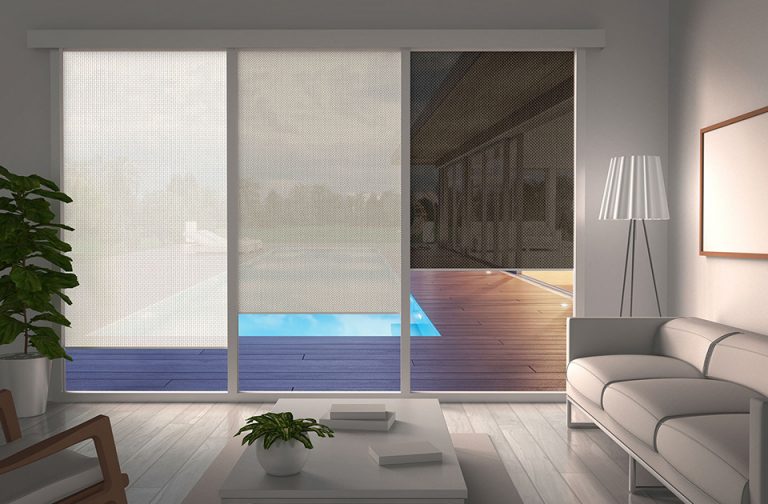When selecting a solar screen fabric, there is more to consider than just aesthetics.
Sun Control: Sun control is the main reason people seek out shades. Blocking out harmful UV rays can help protect the flooring, furniture, and art in your home/office. Additionally, shades can help control the light, reducing glare or letting more light into a darker space.
Insulation: Choosing the right shade fabric can help to control heating and cooling costs.
Privacy: The level of privacy in a solar screen can vary greatly, so it is important to consider the use of the space and what it requires.
View: If you have a beautiful view, you may not want to hide it, but you do not want to forgo a shade all together.
Openness Factor
The most common term in solar screen fabrics is Openness Factor. Openness factor (OF) is presented as a percentage and relates to how tightly the yarns are woven, thus explaining the ratio of open space to yarns in the weave. Smaller numbers have less space, therefore representing a tighter weave and letting less light in.
Our solar screen offering ranges from Privacy (<1%) to 15%, allowing you to select the correct openness for your need.
Openness factor is a technical measurement and is not impacted by fabric color, however color selection does play a big part in the performance of the shade.
Thermal Performance
In terms of thermal performance, lighter colors have higher reflectivity values and therefore reflect more thermal energy out of the room. Darker colors have lower reflectivity and higher absorption and as a result transfer more heat into a room.
Optical Properties/View Through
The inverse is true for optical properties as light colors let more light through, resulting in higher glare levels. Dark colors absorb more light, therefore reducing glare. This also translates to view through.
People are always surprised to learn that dark colors in solar screen offer superior view through and are best if you wish to preserve your view.
The images below show the same openness factors in a light and dark color and may make the above paragraphs easier to understand.
LIGHT SOLAR SCREEN FABRIC

DARK SOLAR SCREEN FABRIC

Selecting a Color
Both light and dark colors have their own strengths and weaknesses, so it is important to determine what is of value to the end user. Our Visualizer tool available through our sister company, Texstyle, is a valuable resource that simulates interior and exterior view through based on color and openness factor to help guide the discussion.
Taking the best traits of light and dark, metalized fabrics add another level to the conversation, and will be discussed in a future blog post, so make sure to check back for all you ever wanted to know about metalized fabric.
In the meantime, remember to consider both openness factor and color when helping a customer determine the best solar screen fabric for their window and if you’re not sure, feel free to contact us for help.

